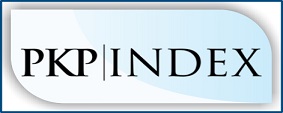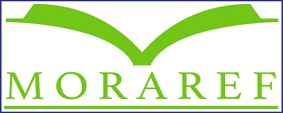Faktor-Faktor Yang Berhubungan Dengan Tingkat Literasi Kesehatan Pasien Pelayanan Kedokteran Keluarga
DOI:
https://doi.org/10.31004/prepotif.v5i2.1798Keywords:
family medicine, health information access, health literacyAbstract
ABSTRACT Introduction: Health literacy is crucial for health management, but still has become a problem in many countries. The objective of this study was to assess patient’s health literacy levels in Kiara Family Medicine Clinic of the Medical Faculty University of Indonesia and its determinants. Method: This was quantitative research with cross- sectional design. The population was all patients visiting the clinic during the data collection period. The samples were patients who met the inclusion and exclusion criteria, chosen with consecutive sampling technique. Minimal sample size was counted using different proportion hypothesis test formula, results in minimum of 134 respondents. The independent variables were age, language, ethnicity, sex, level of education, length of education, occupation, income, access to health services, and health information access. The dependent variable was levels of health literacy.The instruments were questionnaires on health literacy determinats and Newest Vital Sign adapted in bahasa Indonesia (NVS-I). Univariate, bivariate (chi-square test), and multivariate (logistic regression) analyses were conducted. Results: 27.4% of respondents had high health literacy level and 72.6% of respondents had low health literacy level. Factors associated with health literacy levels were health information access and length of education. The most dominant influencing factor of health literacy was accessibility to health information. Conclusion: Most of the patients had low health literacy level with NVS-I measurement. The factor most associated with health literacy level was health information access. More efforts are needed in promoting patient’s health literacy through improving health information access. Keywords: family medicine, health information access, health literacyReferences
Adams, R. J., Stocks, N. P., Wilson, D. H., Hill, C. L., Gravier, S., Kickbush, I., & Beilby, J. J. (2009). Health literacy: an new concept for general practice? Australian Family Physician, 38(3), 144–146.
Barclay, L. (2011). Limited Literacy May Reduce Prescription Adherence - Medscape - Feb 28, 2011. Medscape. https://www.medscape.com/viewarticle/738090
Chen, H. (2017). Association Between Health Literacy , Health Information Access , And Health Care Choices In China (Issue April) [Instituto Universitario de Lisboa]. https://repositorio.iscte-iul.pt/bitstream/10071/15902/1/han_chen_diss_mestrado.pdf
Chew, L. D. (2004). The impact of low health literacy on diabetes outcomes. Diabetes Voice, 49(3), 30–32.
Fransen, M. P., Van Schaik, T. M., Twickler, T. B., & Essink-Bot, M. L. (2011). Applicability of internationally available health literacy measures in the Netherlands. Journal of Health Communication, 16(SUPPL. 3), 134–149. https://doi.org/10.1080/10810730.2011.604383
Ishikawa, H., & Kiuchi, T. (2010). Health literacy and health communication. BioPsychoSocial Medicine, 4(18), 1–5. https://doi.org/10.1186/1751-0759-4-18
Jahan A, R. (2000). Promoting health literacy: a case study in the prevention of diarrhoeal disease from Bangladesh. Health Promotion International, 15(4), 285–291.
Jovic-vranes, A., Bjegovic-mikanovic, V., & Marinkovic, J. (2009). Functional health literacy among primary health-care patients : data from the Belgrade pilot study. Journal of Public Health, 31(4), 490–495. https://doi.org/10.1093/pubmed/fdp049
Kickbush, I., Pelikan, J. M., Apfel, F., & Tsouros, A. D. (2013). Health Literacy:The Solid Facts. In World Health Organization. https://apps.who.int/iris/bitstream/handle/10665/128703/e96854.pdf
Kusumadewi, D. (2012). Kiara Family Medicine Clinic.
Lee, H. Y., Jin, S. W., Henning-smith, C., Lee, J., Lee, J., & Ave, H. (2021). Role of Health Literacy in Health-Related Information-Seeking Behavior Online : Cross-sectional Study. Journal of Medical Internet Research, 23(1), e14088. https://doi.org/10.2196/14088
Lee, S. D., Tsai, T., Tsai, Y., & Kuo, K. N. (2010). Health literacy , health status , and healthcare utilization of Taiwanese adults : results from a national survey. BMC Public Health, 10(1), 614. https://doi.org/10.1186/1471-2458-10-614
Lestari, P., & Handiyani, H. (2017). The higher level of health literacy among health students compared with non- health students. UI Proc. HealthMed, 1, 46–50. http://proceedings.ui.ac.id/index.php/uiphm/article/download/141/185
Lubis, F. (2008). Dokter Keluarga Sebagai Tulang Punggung dalam Sistem Pelayanan Kesehatan. Majalah Kedokteran Indonesia, 58, 27–34. GoogleScholar
Ng, E., & Omariba, D. W. R. (2010). Health Literacy and immigrants in Canada : Determinants and effects on health outcomes (Issue March).
Nielsen-bohlman, L., Panzer, A. M., Kindig, D. A., & Literacy, H. (2005). Health literacy: a prescription to end confusion. In Choice Reviews Online (Vol. 42, Issue 07). National Academies Press. https://doi.org/10.5860/choice.42-4059
Nutbeam, D. (2000). Health literacy as a public health goal : a challenge for contemporary health education and communication strategies into the 21st century. Health Promotion International, 15(3), 259–268.
Ozdemir, H., Alper, Z., Uncu, Y., & Bilgel, N. (2010). Health literacy among adults: A study from Turkey. Health Education Research, 25(3), 464–477. https://doi.org/10.1093/her/cyp068
Pan, F. C., Su, C. L., & Chen, C. H. (2010). Development of a health literacy scale for chinese-Speaking adults in taiwan. World Academy of Science, Engineering and Technology, 37(1), 1201–1207.
Parker, R. (2000). Health literacy: A challenge for American patients and their health care providers. Health Promotion International, 15(4), 277–283. https://doi.org/10.1093/heapro/15.4.277
Peerson, A., & Saunders, M. (2009). Health literacy revisited: What do we mean and why does it matter? Health Promotion International, 24(3), 285–296.https://doi.org/10.1093/heapro/dap014
Pelikan, J. M., Straßmayr, C., Sørensen, K., & Nowak, P. (2020). Health Literacy Measurement.
Primack, B. A., Wickett, D. J., Karemer, K. L., & Zickmund, S. (2013). Teaching Health Literacy using Popular Television Programming: A Qualitative Pilot Study. American Journal of Health Education, 41(3), 147–154. https://doi.org/10.1080/19325037.2010.10598856.
Safeer, R. S., & Keenan, J. (2005). Health literacy: The gap between physicians and patients. American Family Physician, 72(3), 463–468.
Sahroni, Anshari, D., & Krianto, T. (2019). Determinan Sosial Terhadap Tingkat Literasi Kesehatan Pada Pasien Hipertensi di Puskesmas Kota Cilegon. Jurnal Kesehatan, 6(3), 111–117.
Shah, L. C., West, P., Bremmeyr, K., & Savoy-Moore, R. T. (2010). Health literacy instrument in family medicine: The “newest vital sign†ease of use and correlates. Journal of the American Board of Family Medicine, 23(2), 195–203. https://doi.org/10.3122/jabfm.2010.02.070278
Soemitro, D. H. (2014). Analisis tingkat health literacy dan pengetahuan pasien hipertensi di Puskesmas Kabupaten Malang. Calyptra, 3(1), 1–13.
Sopamena, Y., Pongtambing, Y. S., Andriani, W. O. A. S., Fitriani, Y., & Anshari, D. (2020). Adaptasi Alat Ukur Literasi Gizi Pada Mahasiswa Angkatan Pertama Program Sarjana di Universitas Pattimura, Maluku. JGMI: The Journal of Indonesian Community Nutrition, 9(2), 83–92.
Suka, M., Odajima, T., Okamoto, M., Sumitani, M., Igarashi, A., Ishikawa, H., Kusama, M., Yamamoto, M., Nakayama, T., & Sugimori, H. (2015). Relationship between health literacy, health information access, health behavior, and health status in Japanese people. Patient Education and Counseling, 98(5), 660–668. https://doi.org/10.1016/j.pec.2015.02.013
Vamos, S., Okan, O., Sentell, T., & Rootman, I. (2020). Making a Case for “ Education for Health Literacy â€: An International Perspective. International Journal of Environmental Research and Public Health, 17(1436), 1–18. https://doi.org/10.3390/ijerph17041436
Wallace, L. (2006). Patients’ Health Literacy Skills: The Missing Demographic Variable in Primary Care Research. Annals of Family Medicine, 4(1), 85–86. https://doi.org/10.1370/afm.2431
Weiss, B. D., Mays, M. Z., Martz, W., Castro, K. M., DeWalt, D. A., Pignone, M. P., Mockbee, J., & Hale, F. A. (2005). Quick assessment of literacy in primary care: The newest vital sign. Annals of Family Medicine, 3(6), 514–522. https://doi.org/10.1370/afm.405
White, S. (2008). Assessing the Nation’s Health Literacy: Key concepts and findings of the National Assessment of Adult Literacy (NAAL). American Medical Association Foundation.
Williams, M. V., Baker, D. W., Parker, R. M., & Nurss, J. R. (1998). Relationship of functional health literacy to patients’ knowledge of their chronic disease: A study of patients with hypertension and diabetes. Archives of Internal Medicine, 158(2), 166–172. https://doi.org/10.1001/archinte.158.2.166
Wolf, M. S., Davis, T. C., Shrank, W., Rapp, D. N., Bass, P. F., Connor, U. M., Clayman, M., & Parker, R. M. (2007). To err is human: Patient misinterpretations of prescription drug label instructions. Patient Education and Counseling, 67(3 SPEC. ISS.), 293–300. https://doi.org/10.1016/j.pec.2007.03.024
Downloads
Published
How to Cite
Issue
Section
License
Copyright (c) 2021 Karina Samaria Santosa, Hadi Pratomo

This work is licensed under a Creative Commons Attribution-ShareAlike 4.0 International License.
Authors who publish with this journal agree to the following terms:
- Authors retain copyright and grant the journal right of first publication with the work simultaneously licensed under a Creative Commons Attribution License that allows others to share the work with an acknowledgement of the work’s authorship and initial publication in this journal.
- Authors are able to enter into separate, additional contractual arrangements for the non-exclusive distribution of the journal’s published version of the work (e.g., post it to an institutional repository or publish it in a book), with an acknowledgement of its initial publication in this journal.
- Authors are permitted and encouraged to post their work online (e.g., in institutional repositories or on their website) prior to and during the submission process, as it can lead to productive exchanges, as well as earlier and greater citation of published work (See The Effect of Open Access).











